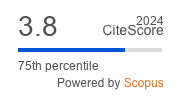Article | Open Access
Walking to School: What Streets Do Children Prefer?
| Views: | 2044 | | | Downloads: | 1095 |
Abstract: Active school travel provides children with a daily opportunity to engage actively with their local urban environments. Despite widespread recognition that understanding the underlying factors of children’s navigation choices is crucial for developing effective environmental interventions to promote active school travel, there is limited evidence on children’s experiences regarding their school journeys. This is due in part to the fact that most studies rely on GIS-calculated routes which may not adequately represent children’s actual home-school journeys, and hence actual experiences. This study aims to identify specific environmental attributes influencing children’s navigation choices based on children’s (9–10 year olds) actual walking routes to school in Newcastle upon Tyne, UK. 45 pairs of selected and avoided streets were compared using a range of urban form (e.g., street connectivity measured through space syntax variables) and street design (e.g., footpath width) characteristics. Statistical analysis highlighted significant design attributes as potential determinants of navigation selections. In-depth street-level observations provided insight into the urban character of these street pairs, identifying the environmental qualities that could offer opportunities for active and safe commuting among children. This study contributes to the literature by broadening our understanding of the environmental attributes that may promote active school travel. Our findings, based on children’s actual experiences, may also inform urban planners and designers on designing inclusive child-friendly cities.
Keywords: active school travel; child-friendly cities; children’s experiences; neighbourhood design; route selection; street connectivity; street design
Published:
© Nafsika Michail, Ayse Ozbil Torun. This is an open access article distributed under the terms of the Creative Commons Attribution 4.0 license (http://creativecommons.org/licenses/by/4.0), which permits any use, distribution, and reproduction of the work without further permission provided the original author(s) and source are credited.


